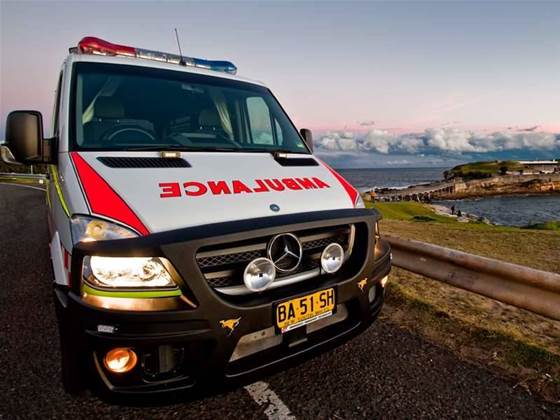Australian public safety agencies are to be given 5 MHz of dedicated paired spectrum to operate a Long Term Evolution (LTE) network, half the amount they had sought.

The Australian Communications and Media Authority (ACMA) today confirmed that emergency services would get "5 + 5 MHz in a frequency division duplex (FDD) arrangement)", for a total allocation of 10 MHz in the prized 800 MHz spectrum band.
They will also be given 50 MHz of spectrum in the 4.9 GHz band, which is to act as a kind of localised burst capacity for specific incident responses.
The proposal has left emergency services disappointed and frustrated, with Police Federation of Australia CEO Mark Burgess blasting the decision.
"I've got no doubt that in time the decision will be proved to be wrong and insufficient, and they'll [the Government] have to go through the pain again," Burgess told iTnews.
"It's sort of somewhat gobsmacking. How can you show the Government and show ACMA the error of their ways? They just seem to have thumbed their nose at public safety and marched on."
Emergency services had initially wanted an allocation in the 700 MHz 'digital dividend' band, but the Government instead suggested a slice of the adjacent 800 MHz band.
In either band, emergency services had sought an allocation of 20 MHz, consisting of 10 MHz plus 10 MHz of dedicated paired spectrum.
Burgess warned earlier this year (pdf) that the ACMA was considering only providing half of the spectrum allocation sought by agencies - fears that have been confirmed with today's decision.
The ACMA said that "evidence" gathered by the Public Safety Mobile Broadband Steering Committee - set up in May 2011 to investigate an 800 MHz allocation - indicated that emergency services did not need the amount of spectrum they sought.
"In fact, the ACMA's analysis showed that 3 + 3 MHz would be sufficient to serve day-to-day and pre-planned traffic," the regulator noted. (pdf)
"However, 5 + 5 MHz would give headroom for future expansion.
"There was not sufficient justification for an additional 5 MHz of paired spectrum".
The ACMA also considered it likely that the minimum block size it would allocate 800 MHz spectrum in would be 5 MHz.
Agencies would be able to utilise spectrum in the 4.9 GHz band as "supplementary, localised capacity where and when it is needed".
"A large part of its utility will be to provide a data offload capability for the public safety mobile broadband network," the regulator said.
"In such a scenario, the fixed (public safety mobile broadband or commercial) network would provide wide area broadband data coverage, while deployable 4.9 GHz base stations would be used for extra capacity around incident sites when needed."
Allocation pain
The ACMA has not decided exactly what spectrum it will give emergency services.
The 800 MHz allocation has been left to an existing review of the 803-960 MHz band, while the proposed 4.9 GHz allocation will be subject to a separate consultation process.
"There's a whole lot of pain for a whole lot of other people to come yet, because people have got to be moved [from existing 800 MHz allocations] to accommodate [ACMA's pledge]," Burgess said.
"The Government's challenge now is [also] to convince all of the state governments, who have supported the 20 MHz [push]. I think they've got a fair battle on their hands."
Communications Minister Stephen Conroy said in a statement that the Government would begin selling the plan to the states, with a view to gaining buy-in ahead of "the Standing Council on Police and Emergency Management in November."
Motorola Solutions managing director, Gary Starr, claimed last week that any useable chunk of the 800 MHz band was at least three to five years away, putting emergency services here at a disadvantage compared to their global peers.
Burgess accused the Federal Government of putting public safety concerns second to money.
"It appears from our perspective that public safety has come second to money," he said.
"That's why we lost out on the 700 MHz. It was all about balancing the budget, and public safety came second then.
"And when they said, 'We're going to look at the 800 MHz', we've come second again.
"As we say, It's not officials from ACMA and people from the minister's offices and government officials like parliamentarians that are out evacuating people from houses and trying to save lives - they're sitting at home in their lounge chairs watching it on TV.
"It's police officers, ambulance officers, SES, firefighters. They're the ones that are going to be at the forefront. It's the community and the public safety people that are being put at risk."
Burgess vowed to continue the spectrum fight.
"As far as we're concerned it's not over," he said.



_(20).jpg&h=140&w=231&c=1&s=0)
_(22).jpg&h=140&w=231&c=1&s=0)






 iTnews Executive Retreat - Security Leaders Edition
iTnews Executive Retreat - Security Leaders Edition












_(1).jpg&h=140&w=231&c=1&s=0)



